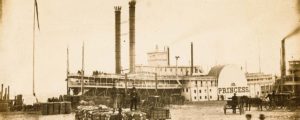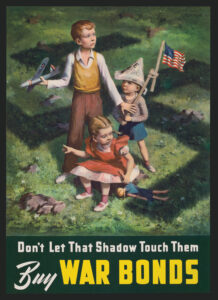The Forger: An Extraordinary Story of Survival in Wartime Berlin
By Cioma Schönhaus. 220 pp. Da Capo, 2008. $23.
If this were fiction, it could be a coming-of-age adventure tale like Tom Sawyer or Huckleberry Finn—with some vicious twists. For this memoir recounts the riveting tale of a quick-witted, almost nonchalant teenaged Jewish hero who grows up absurd in Nazi Berlin, complete with multiple ironies, regular doses of humor, recurrent tragedy, and turnarounds a-plenty. But of course The Forger isn’t fiction, and the nearly unflappable young Schönhaus did much better than survive—as if, in that time and place, surviving weren’t enough. When he finally fled Berlin in 1943, the young graphic artist had doctored hundreds, perhaps thousands, of false documents to aid German Jews like himself. More often than not, he prospered in the process, dining at fine restaurants and buying a sailboat he learned to helm. But that is getting ahead of his astonishing story, recounted with first-person savoir-faire and a Twainish drollery that draws the reader ever more deeply into the banality of evil as it slowly, relentlessly encroaches.
Cioma’s parents were among the tens of thousands of Russian transplants who found their way to Berlin after the Russian Revolution, though his father Boris was not White Russian but a Red Army veteran who deserted to marry his beloved Fanja. When baby Samson was born in 1922, they emigrated to Palestine, but confronted with a lack of medical facilities for the infant, they returned to Berlin a year later. Boris opened a successful mineral-water bottling plant and Fanja became a middle-class housewife. The good life, it seemed, was theirs.
The book opens in September 1941, with Cioma working in a labor camp for Jewish youth—“voluntarily,” through the Reich Association of Jews in Germany, though like his father and thousands of others, he was in fact conscripted. Like so many German Jews, the Schönhaus family clings to the notion of normalcy up to and beyond the very moment the Third Reich’s racial policy took its horrific turn from forcing Jews to emigrate to mass murder. Boris, however, is no Pap Finn: an inspiring figure, he is quick with a quip or homely advice and sharply pragmatic. Though he is hardly unaware of what’s happening around him, he refuses to surrender his humanity or his wit, and deploys his considerable resourcefulness to fend off the inevitable. Even when the inevitable comes, and he disappears into the Majdanek concentration camp, he manages to send a postcard to his son—a Herculean feat that Cioma ponders as he faces his own switchback course through looming dangers.
Left utterly alone as the rest of his family is sucked into the camps, Cioma is drawn with increasing speed into Berlin’s underworld of evasion and resistance. His graphic arts talents make him invaluable; once he has a model to work from, he can reproduce any stamp required on forged papers. Besides saving lives, this yields a good income, heady for a boy his age. And so, with the resolute and clever nonchalance that often allows him to hide in plain sight, he takes jaw-dropping youthful risks: wandering onto a military airfield and talking his way out of arrest, complaining about a drunken policeman’s abuse of Jewish patrons in a restaurant. He also rapidly acquires remarkable things: outstanding papers and cover stories, friends and colleagues whose reach extends into the SS and Gestapo, a bicycle, a series of willing women of various ages, even—the pièce de résistance—that sailboat.
The portrait of Berlin’s wartime underbelly that Schönhaus’s stories bare is uniquely striking, partly because its matter-of-fact sensibility is solidly anchored in quotidian reality. Surrounded by evil and indifference, Cioma’s anti-Nazi community is active and at least somewhat successful. The role of the Confessing Church, a spinoff from German Protestantism formed under the guidance of the anti-Nazi theologian Karl Barth, is vital: its adherents put documents in the collection baskets that can be forged to help Jews escape. Everyone has a task, and Christian or Jew, they deliver—until the Gestapo’s fateful knock on the door.
Young Schönhaus has his close calls from the get-go, but as 1942 becomes 1943 they get closer and more frequent. It’s clear that the Reich’s long writhing death will swell its destructive fury in the concentration camps thanks to “the ordinary population,” he writes, “which slavishly served the Nazi regime.” That includes the twenty or so Jewish greifers (snatchers) recruited by the Gestapo in Berlin, who did plenty of dirty work; one woman Schönhaus knew betrayed at least a hundred of her fellow Jews. His young man’s sense of immunity is increasingly punctured: warned by colleagues he’s a marked man, especially after a few careless mistakes like losing his wallet twice, Schönhaus at last decides it is time to run.
With characteristically clever bravado, he plumps down three thousand marks for an excellent bicycle, balloon-tired and soft-seated, so that he can pedal to Switzerland. He writes dryly, “Everyone living underground in Berlin and never venturing out of doors believed that the city was hemmed in, and that anybody trying to get out into the countryside would run into a police checkpoint. But in reality I cycled along a car-free highway. Apart from squirrels darting across the road, and the noisy starlings flocking together, there was no other sign of life. No one bothered about me. From the bridge in Pichelsberg I took a last look down at my boat….It lay bare of rigging, dreaming alongside its mooring buoy. I followed the signposts to Potsdam.”
Using contacts and instructions from his underground colleagues, he narrowly evades discovery at a few key points and crosses the border into Switzerland. There, thanks to Barth, he continued his graphic arts studies on a scholarship, became an artist, and raised a family. At eighty-five, he still lives in a Basel suburb.
Originally published in the May 2008 issue of World War II Magazine. To subscribe, click here.




